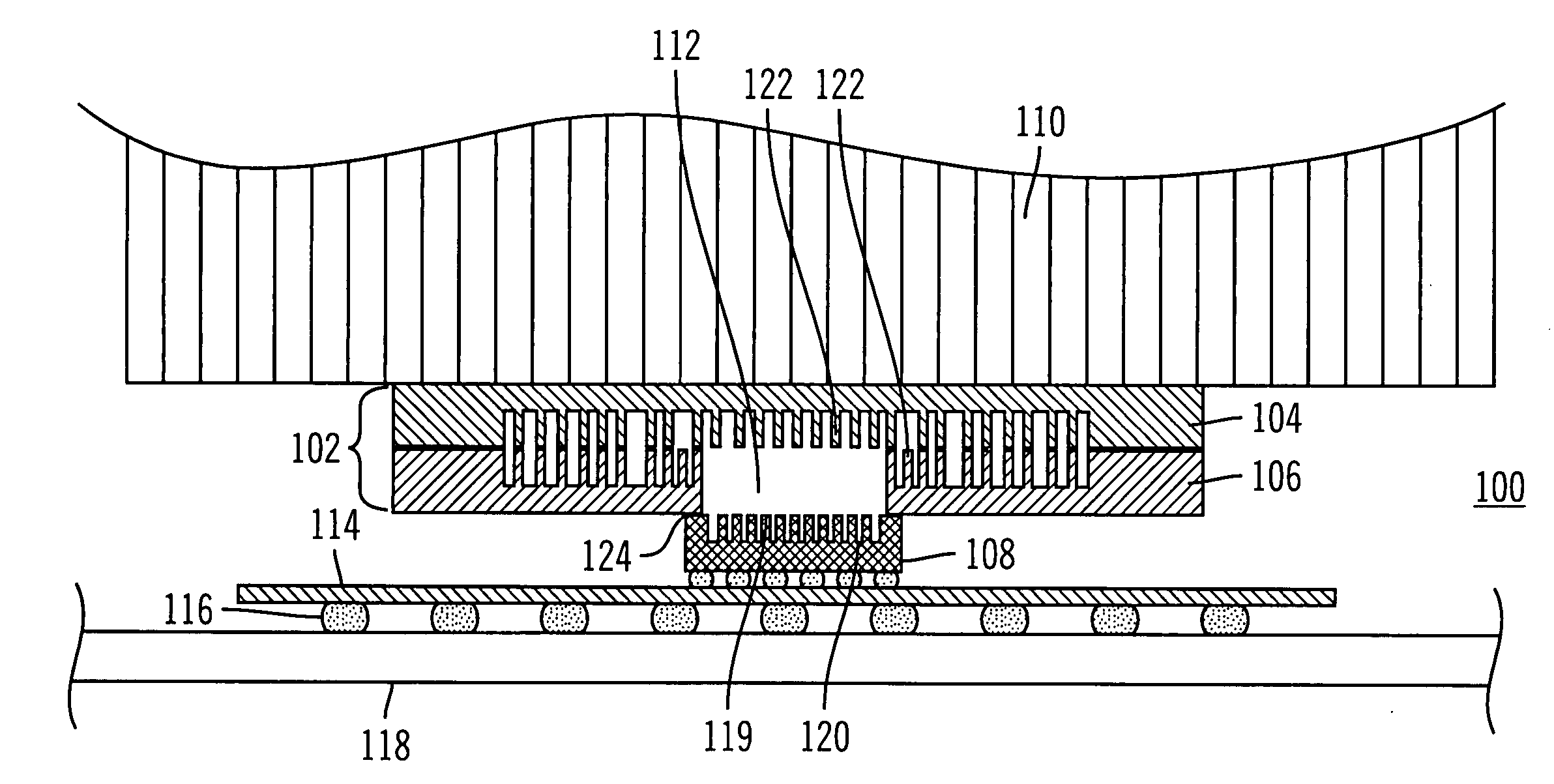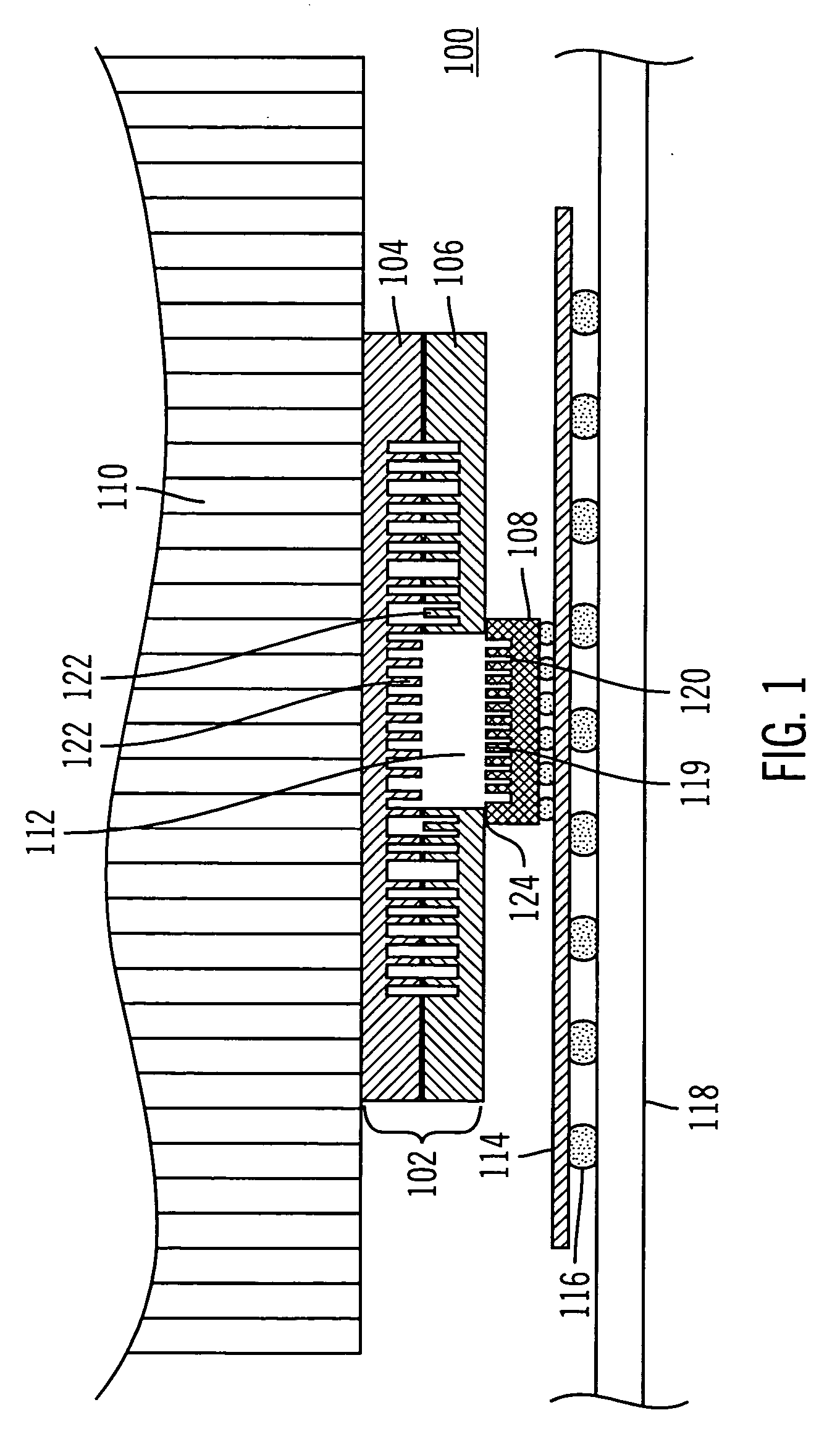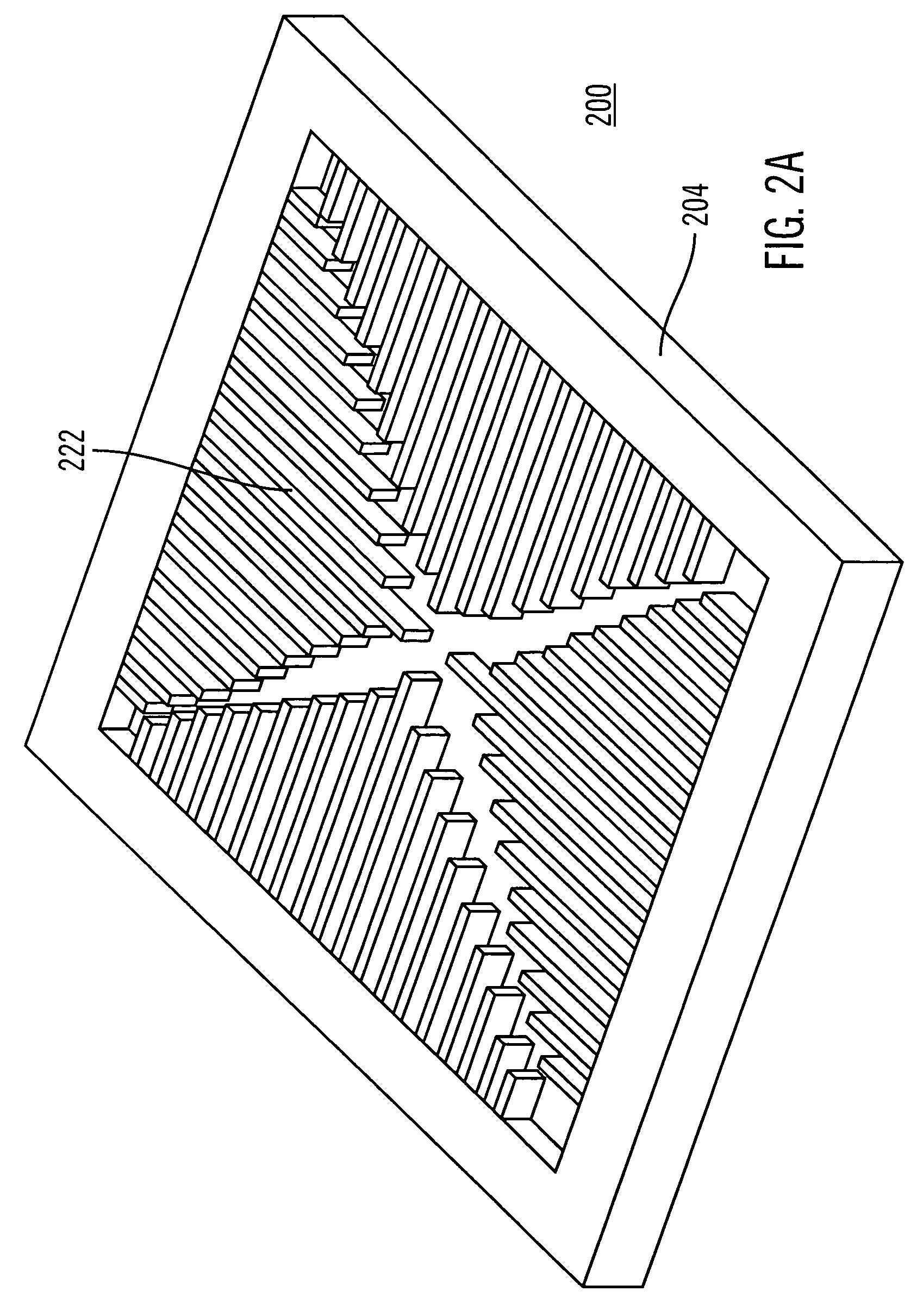Thermal interposer for thermal management of semiconductor devices
a technology of thermal management and semiconductor devices, applied in semiconductor devices, semiconductor/solid-state device details, electrical apparatus, etc., can solve the problems of inability to rigidly join to the integrated circuit chip, and inability to achieve thermal conductivity high
- Summary
- Abstract
- Description
- Claims
- Application Information
AI Technical Summary
Benefits of technology
Problems solved by technology
Method used
Image
Examples
first embodiment
[0045]FIG. 1 illustrates a cross sectional diagram of an integrated thermal interposer according to the present invention. The wick structures (or grooves) 120 and 122 are shown in FIG. 1 as being composed of parallel and evenly spaced channels and fins so that the overall structure can be easily understood. However, as will become apparent from subsequent drawings, the configuration of the wick structure in preferred embodiments is significantly more complicated.
[0046] As shown in FIG. 1, a semiconductor device 108 has a back surface 119 a wick structure (such as grooves) 120. The integrated thermal interposer 102 has two plates 104 and 106, both having a wick structure 122. These two plates 104 and 106 are bonded together with the wick structures facing each other by soldering, brazing, direct silicon bonding or any other appropriate bonding method that forms a suitable hermetic seal. The upper plate 104 is made of a thermally conductive material, such as silicon, silicon carbide,...
second embodiment
[0056]FIG. 3B illustrates a cross sectional view of a portion of the grooves and walls of an upper plate of a thermal interposer according to the present invention. In this embodiment, a section of the wick structure (e.g., grooves) and walls 304 of the upper plate and / or the lower plate are covered with a layer 322 of graphite foam, graphite fiber, or carbon nanotubes. More specifically, the upper plate 104 and / or the lower plate 106 are made of silicon, and the surfaces of the wick structure are further processed so as to deposit or otherwise add anisotropic graphite foam, graphite fiber, or carbon nanotubes onto them. In various embodiments, the graphite foam, graphite fiber, or carbon nanotubes 322 cover some or all of the wick structures. This added layer 322 of material greatly increases the surface area so as to provide increased wicking action to return the working fluid to the semiconductor chip where it is vaporized. Further, the high thermal conductivity of the graphite f...
third embodiment
[0061]FIG. 4 illustrates a cross sectional diagram of an integrated thermal interposer having one plate according to the present invention. As shown, a single plate 404 with grooves 422 is bonded directly to the back surface of a semiconductor device 408. The grooved (or other wick structured) portion 424 of the plate is dimensioned so as to be over the area 426 of the back surface 409 of the semiconductor device 408. Once the bonding areas of the plate 404 and the back surface of the semiconductor device 408 are aligned and bonded together by use of a solder band or similar hermetic bonding material 406, they can be evacuated and filled with a suitable working fluid (e.g., via a fill port on the side or back of the plate 404) to form a vapor chamber structure. A heat-sink fixture can be thermally coupled to the top of the plate 404, as in the embodiment of FIG. 1. Additionally, a substrate can be attached to the bottom surface of the semiconductor device 408 for electrical connecti...
PUM
 Login to View More
Login to View More Abstract
Description
Claims
Application Information
 Login to View More
Login to View More - Generate Ideas
- Intellectual Property
- Life Sciences
- Materials
- Tech Scout
- Unparalleled Data Quality
- Higher Quality Content
- 60% Fewer Hallucinations
Browse by: Latest US Patents, China's latest patents, Technical Efficacy Thesaurus, Application Domain, Technology Topic, Popular Technical Reports.
© 2025 PatSnap. All rights reserved.Legal|Privacy policy|Modern Slavery Act Transparency Statement|Sitemap|About US| Contact US: help@patsnap.com



